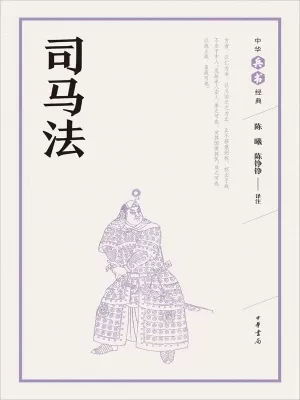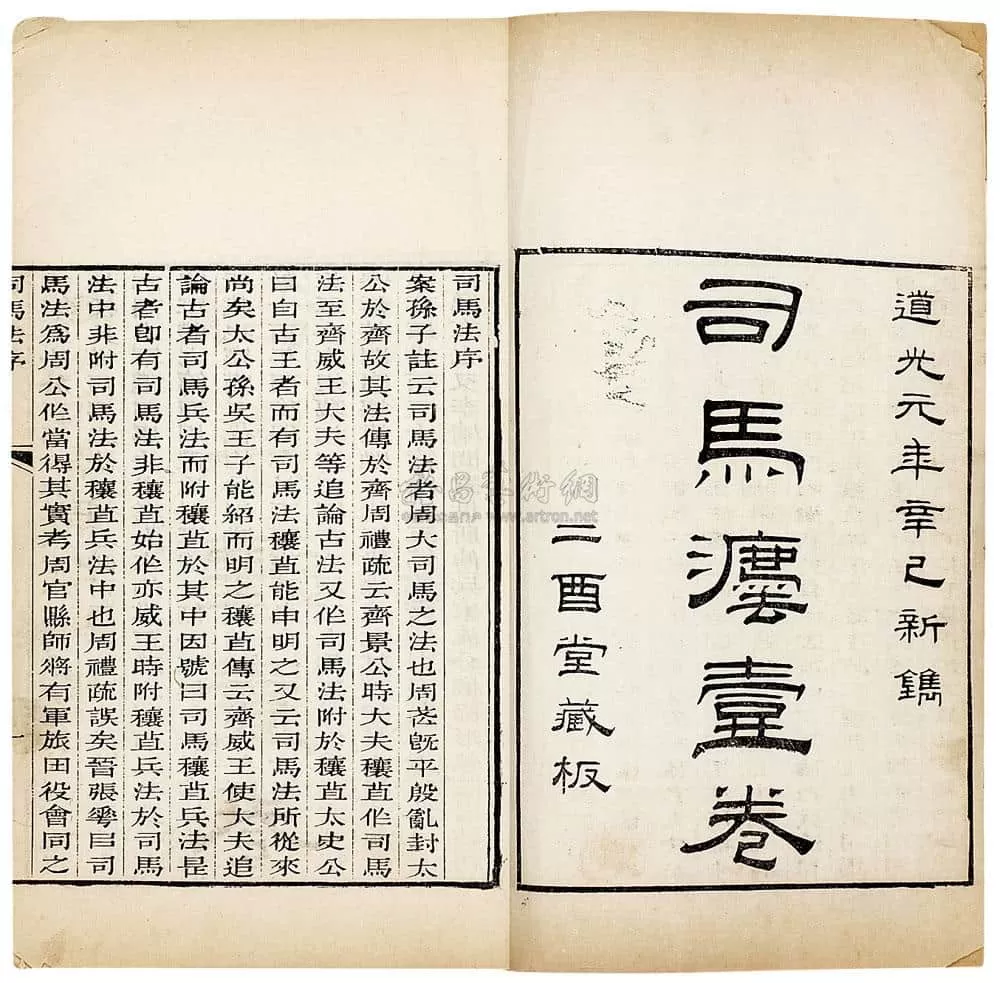
Sima's Rules of War was first recorded in the Treatise on Literature section of The Book of Han, classified under the category of rites and titled Military Rites: Sima's Rules of War, totaling 155 chapters. After the Han Dynasty, the book underwent significant scattering and loss during its long transmission. By the time the Sui Book of Classics was compiled in the Tang Dynasty, it was listed as a 3-volume work with 5 chapters, categorized under the military strategy section of the philosophy category, and known simply as Sima's Rules of War. This is the prototype of the current 3-volume, 5-chapter version of Sima's Rules of War.
According to the Biography of Sima Rangju in Records of the Grand Historian, "King Wei of Qi instructed his officials to compile the ancient military strategies of Sima and included the teachings of Rangju among them, hence it was named Sima Rangju's Military Strategies." Sima Rangju, a native of the State of Qi in the late Spring and Autumn Period, originally surnamed Tian and named Rangju, led troops to victory against the States of Jin and Yan. He was ennobled as the Grand Sima in charge of military affairs by Duke Jing of Qi and later revered as Sima Rangju.
Also, in the Preface by the Grand Historian in Records of the Grand Historian, it is stated: "The origins of Sima's Rules of War are ancient. Taigong, Sun, Wu, and Prince (Chengfu) were able to carry on and elucidate them." This indicates that Sima's Military Strategies was not written by one person. The initial version during the founding of the Zhou Dynasty was composed by Jiang Taigong. After his death, several individuals revised and compiled it, resulting in the Sima's Rules of War known to people today.
It is said that Sima's Military Strategies was compiled by successive Simas (military commanders) during the Xia, Shang, and Zhou dynasties. According to Dialogues Between Tang Li and Others, "The Sima's Rules of War of the Zhou Dynasty originated from Taigong. After Taigong's death, the people of Qi obtained his legacy. When Duke Huan of Qi became the hegemon of the world and appointed Guan Zhong, they revised Taigong's laws, calling it the 'regulated army,' and all the vassal states submitted." As Jiang Taigong was the first Sima of the Zhou Dynasty, the Sima's Rules of War of the Zhou Dynasty was compiled by him after the Xia and Shang dynasties.
This book was highly regarded by military strategists and rulers throughout history. Emperor Wu of Han established military officials and selected candidates based on Sima's Rules of War, with their rank equivalent to that of doctors (scholars). Sima Qian praised the book, saying, "Its scope is vast and profound. Even the conquests of the Three Dynasties (Xia, Shang, and Zhou) could not fully exhaust its meaning, as reflected in its text." During the Yuanfeng period of the Northern Song Dynasty, Sima's Rules of War was listed as one of the Seven Military Classics, serving as a required reading for examining military officials, selecting generals, and studying military affairs.
Due to the ancient origin and significant loss of Sima's Rules of War, scholars throughout history have held various views on its authenticity, compilation date, authors, and other issues. Especially since the Ming and Qing dynasties, the trend of debating its authenticity has become prevalent, making Sima's Rules of War a highly controversial military treatise.
Military Strategy Commentary
Some believe that Sima's Rules of War is a forged book; some scholars argue that Sima's Military Strategies, Sima Rangju's Military Strategies, Sima's Rules of War, and Military Rites: Sima's Rules of War mentioned in historical records are different books; some contend that the current version of Sima's Rules of War can be divided into two parts, with the first two chapters belonging to the ancient Sima's Rules of War and the latter three chapters to Sima Rangju's Military Strategies.
Currently, domestic scholars generally agree that the current version of Sima's Rules of War is not a forgery, and that the historical Sima's Military Strategies, Sima Rangju's Military Strategies, and Military Rites: Sima's Rules of War are all encompassed within Sima's Rules of War. The authors are attributed to Sima Rangju and those who compiled his teachings. Although the book has suffered significant loss, with only 5 chapters remaining out of the original 155, and its content is incomplete, it still possesses excellent military ideas and high military value. Sima's Rules of War covers a wide range of military aspects, preserving ancient principles of waging and governing war, including important historical materials on the military rites, weapons, badges, rewards and punishments, and vigilance of the Xia, Shang, and Zhou dynasties. Furthermore, it contains rich philosophical thoughts, emphasizing the transformation between spiritual and material forces in war and the unity of the dialectical relationship between lightness and heaviness. It attaches great importance to the role of human factors and morale.
Compendium of Military Treatises
Sima's Rules of War is a famous ancient Chinese military treatise and one of the Seven Military Classics. At the beginning of the Warring States Period, King Wei of Qi instructed his officials to compile the "ancient military strategies of Sima" and included the military strategies of Sima Rangju, a general of the State of Qi during the Spring and Autumn Period, hence it was also known as Sima Rangju's Military Strategies. The Treatise on Literature in The Book of Han lists Military Rites: Sima's Rules of War with 155 chapters, classified under the rites category. The Sui Book of Classics records Sima's Military Strategies as a 3-volume work attributed to Sima Rangju, classified under the military strategy section of the philosophy category. Subsequent historical records and bibliographies mostly followed this classification. The current version consists of 3 volumes and 5 chapters: Benevolence as the Foundation, The Righteousness of the Son of Heaven, Establishing Ranks, Maintaining Positions, and Employing the Multitude. There are also over 60 additional excerpts totaling more than 1,600 characters. During the Tang Dynasty, Wei Zheng included part of its content in The Governance Essentials from Various Books. The earliest extant edition is the Wu Jing Qi Shu (Seven Military Classics) carved during the Song Dynasty. Various annotated and reprinted editions that have circulated to the present day number no less than forty or fifty.

Provides The Most Comprehensive English Versions Of Chinese Classical Novels And Classic Books Online Reading.
Copyright © 2025 Chinese-Novels.com All Rights Reserved
